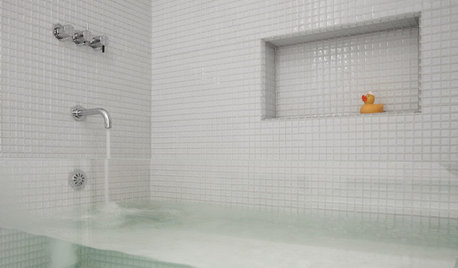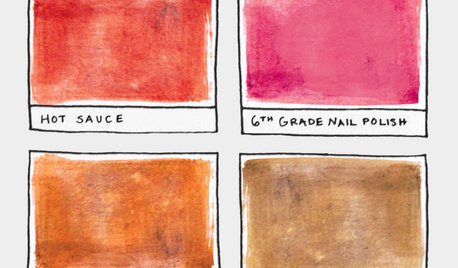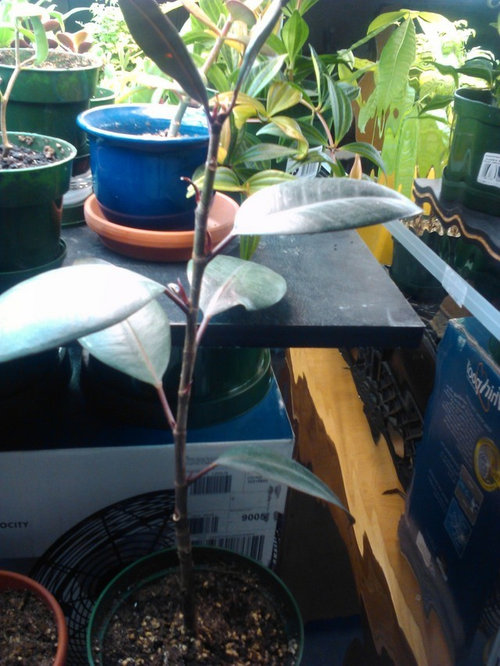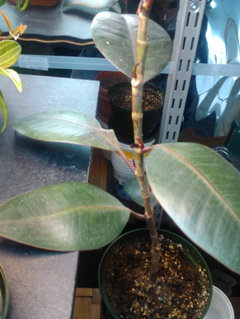Has anyone seen their rubber plant do this??
greentea29
11 years ago
Featured Answer
Sort by:Oldest
Comments (10)
greentea29
11 years agoRelated Professionals
Bellflower Landscape Architects & Landscape Designers · Chattanooga Landscape Architects & Landscape Designers · Eden Prairie Landscape Architects & Landscape Designers · Fort Lee Landscape Architects & Landscape Designers · Harrison Landscape Architects & Landscape Designers · Paradise Landscape Architects & Landscape Designers · Anderson Landscape Contractors · Stamford Landscape Contractors · Azalea Park Landscape Contractors · Galt Landscape Contractors · Louisville Landscape Contractors · Milton Landscape Contractors · San Antonio Landscape Contractors · Seminole Landscape Contractors · Yukon Landscape Contractorsgreentea29
11 years agotropicbreezent
11 years agotapla (mid-Michigan, USDA z5b-6a)
11 years agoTiffany, purpleinopp Z8b Opp, AL
11 years agotapla (mid-Michigan, USDA z5b-6a)
11 years agotropicbreezent
11 years agotapla (mid-Michigan, USDA z5b-6a)
11 years agoTiffany, purpleinopp Z8b Opp, AL
11 years ago
Related Stories

MUDROOMSThe Cure for Houzz Envy: Mudroom Touches Anyone Can Do
Make a utilitarian mudroom snazzier and better organized with these cheap and easy ideas
Full Story
REMODELING GUIDESOne Guy Found a $175,000 Comic in His Wall. What Has Your Home Hidden?
Have you found a treasure, large or small, when remodeling your house? We want to see it!
Full Story
KITCHEN DESIGNThe Cure for Houzz Envy: Kitchen Touches Anyone Can Do
Take your kitchen up a notch even if it will never reach top-of-the-line, with these cheap and easy decorating ideas
Full Story
DECORATING GUIDESRubber Duckie Day Fun to Float Your Boat
We’ve been in fine feather at Houzz gathering all the photos of duckies making their home in yours
Full Story
BUDGET DECORATINGThe Cure for Houzz Envy: Living Room Touches Anyone Can Do
Spiff up your living room with very little effort or expense, using ideas borrowed from covetable ones
Full Story
DECORATING GUIDESThe Cure for Houzz Envy: Dining Room Touches Anyone Can Do
Get a decorator-style dining room on the cheap with inexpensive artwork, secondhand furniture and thoughtful accessories
Full Story
BEDROOMSThe Cure for Houzz Envy: Master Bedroom Touches Anyone Can Do
Make your bedroom a serene dream with easy moves that won’t give your bank account nightmares
Full Story
GREENBotanical Green, Meant to Be Seen
Learn how to cultivate this vibrant yet restful color in your home, using its hues to set the mood for any space
Full Story
CONTAINER GARDENSPatio-Perfect Berry Bushes Like You’ve Never Seen
Small enough for pots but offering abundant fruit, these remarkable bred berries are a boon for gardeners short on space
Full Story
FUN HOUZZ16 Creative Paint Color Names We Haven't Seen — Yet
Someday, the namers of new paint colors will finally run out of ideas. We're here to help
Full StoryMore Discussions












tapla (mid-Michigan, USDA z5b-6a)